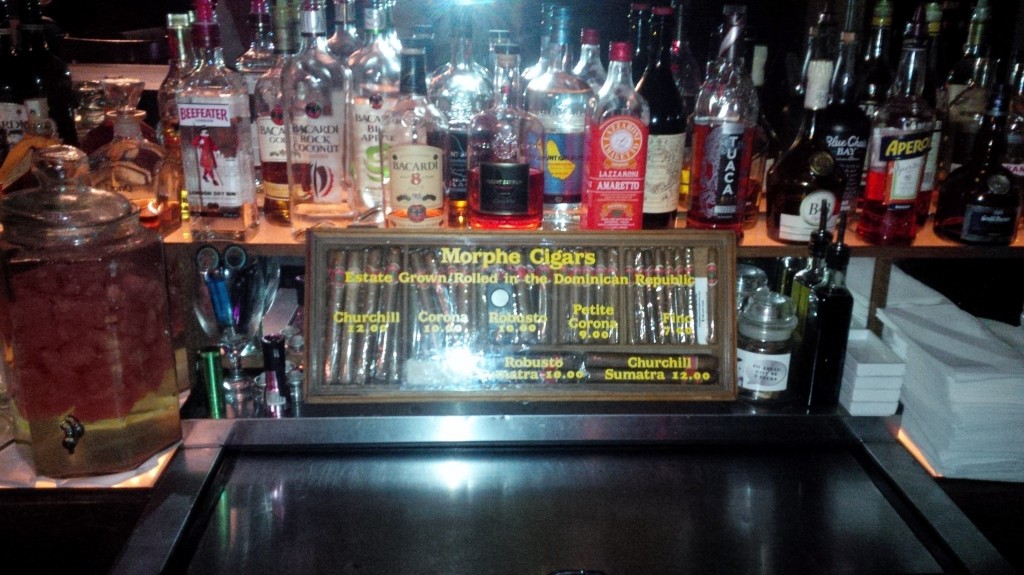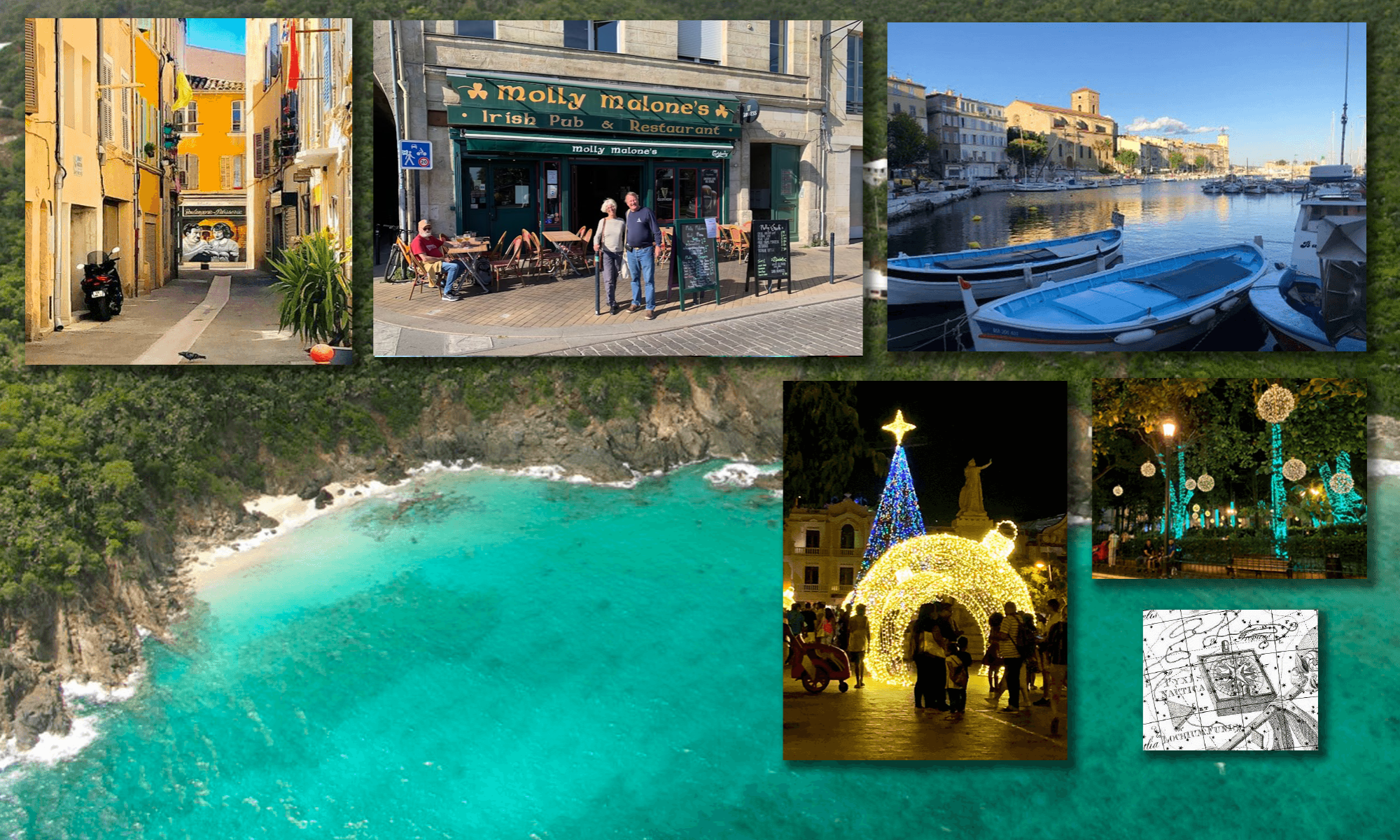Cigar Country: Dominican Republic
Dominican cigars are held in high esteem worldwide. I thought you’d like to see a video of how they hand roll the cigars.
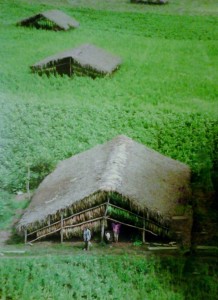
Tobacco is native to the island of Hispaniola, and has been cultivated in the Dominican Republic for centuries. The indigeneous Taino and Arawak people encountered by Columbus and his crew cultivated and smoked the “cohiba” here as well as in Cuba. In the nineteenth century, cigar production in the Carribean was dominated by German monopolies that favored Cuban cigars, and in many ways it only relatively recently that Dominican cigars have come out of the shadow cast by the Cuban giants.
Over half of all cigars consumed in the United States arrive from the Dominican Republic. In the past decade this has become even more evident as the population of Santiago has surged, largely because of “El Boom” — the huge upswing in the popularity of cigar smoking in the United States. While the boom has come and gone, the demand for premium cigars remains and the cigar makers of the DR are responding.
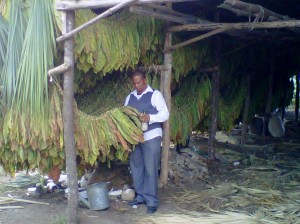
But it wasn’t always this way. The overwhelming reputation and quality of Cuban cigars for a long time left the Dominican product a fairly small share in the market. While Cuban cigars were available in the United States, Dominican tobacco was often relegated to cigarette production. But with the communist revolution in Cuba came both the American embargo and the exodus of many of Cuba’s best tobacco men. One of these was Carlos Torano, who in 1959 fled Cuba to the Dominican Republic with one of its most prized possessions: the seed for a variety of tobacco that would become known as piloto cubano. An unstable government created obstacles for the cigar companies and they struggled. But when the Sandinistas took power in Nicaragua, yet another influx of cigar professionals arrived in the DR. All of these things, combined with a perceptible decrease in the quality of Cuban cigars, helped to firmly plant the industry.
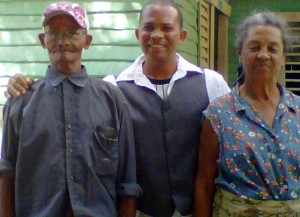
The oldest cigar factory still operating in the Dominican Republic is La Aurora, S.A., in Santiago, the center of cigar production in this country. Other major brands like Arturo Fuente, Davidoff, La Flor Dominicana, and La Gloria Cubana also have factories in or near Santiago.
The primary source of tobacco in the Domincan Republic is the rich and fertile Cibao Valley which lies between two mountain ranges: the Cordillera Septontrional to the north and the Cordillera Central to the south. To the northwest, following the North Yaque river, are the villages where tobacco has been cultivated by local farmers for generations: Morphe, Villa Gonzalez, Navarette, La Canela, among others.
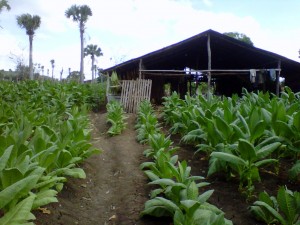
The Cibao valley was formed by the erosion of the Cordilleras and is perfectly situated to protect the crops from Carribean storms. The Yaque valley and the Vega Real within the Cibao– this corridor northwest of Santiago — is where most of the black tobacco for cigars is grown. The country’s richest and deepest topsoil is found here.
There are three traditional types of tobacco grown in the Cibao valley:
Olor Domicano: The only native tobacco in the Dominican Republic. Mild and somewhat salty when grown for binder and filler. Recently it has been grown as wrapper for Davidoff’s Dominican puro.
Piloto Cubano: derived from Cuban seed, this is usually the strongest variety. Used to add strength as filler.
San Vicente: a hybrid of Piloto developed on the farm of San Vicente in the Vuelta Abajo. A bit lighter than Piloto, and somewhat acidic in quality. Used for binder and filler.
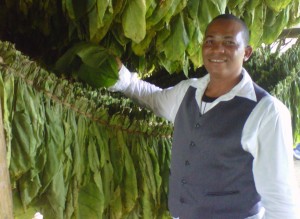
Wrapper leaf has until recent years been a real problem for Dominican cigar makers. Until the Fuente’s experiments with wrapper leaf on their farm in El Caribe, about 2 hours south of Santiago, it was thought that it was impossible to grow quality wrapper in the DR. Wrapper leaf was normally imported from Connecticut or Cameroon to finish the otherwise purely Dominican cigar.
But Carlos Fuentes was determined to grow Dominican wrappers after being told by a group of European retailers that it couldn’t be done. After seeing an unusual batch of piloto cubano grown by Angel Oliva on the farm that would later become Chateau de la Fuente, Carlos decided this would be his Dominican wrapper. After his success, and the huge following obtained by the Opux X line that first used this wrapper, other cigar makers followed suit.
Offered on Consignment to qualifyed buyers
| Prices: | |||||||||
| Box | Wholesale | Suggested | Profit/ | ||||||
| Qty. | Type | Size | Price/Cigar | Retail/Cigar | Cigar | ||||
| 10 | Churchill | 50×7 | $6.00 | $12.00 | $6.00 | ||||
| 10 | Corona | 42×6 | $5.75 | $10.00 | $4.25 | ||||
| 10 | Robusto | 50×7 | $5.75 | $10.00 | $4.25 | ||||
| 10 | Petit Corona | 42×5 | $5.50 | $9.00 | $3.50 | ||||
| 10 | Fino | 30×5 | $4.50 | $7.00 | $2.50 | ||||
| 4 | Churchill * | 50×7 | $6.00 | $12.00 | $6.00 | ||||
| 4 | Robusto * | 42×6 | $5.75 | $10.00 | $4.25 | ||||
| * | Sumatra | ||||||||
| $322.00 | $700.00 | $448.00 | |||||||
Buy Some Here!
**Wholesale Pricing on Bundles 25 Count or more.
* Sumatra Wrapper
